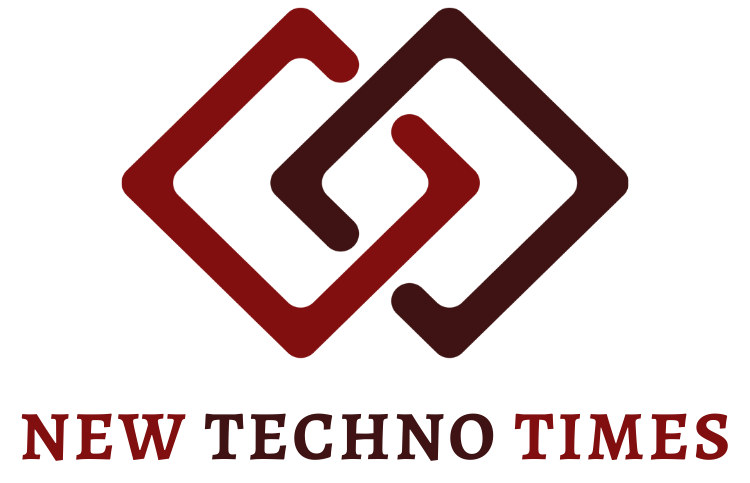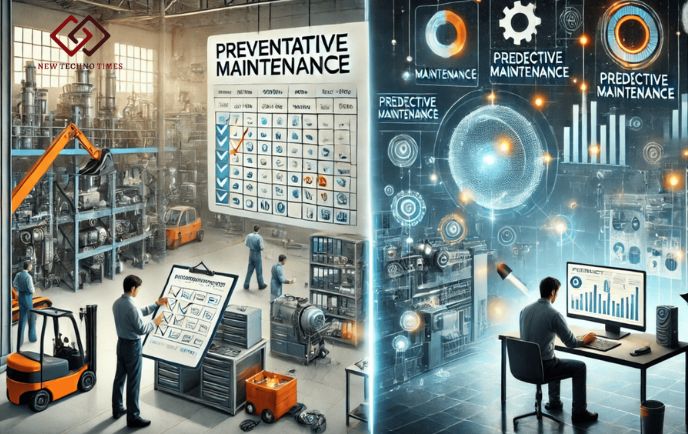Introduction
A comparison of the various maintenance strategies is necessary to determine the most effective strategy for maintaining different assets and optimizing maintenance efficiency. Available studies suggest that organizations can reduce expenditure by selecting the right tactic, lengthening the useful life of the equipment and other tangible resources, and enhancing organizational efficiency.
With these differences in mind, this article aims to help you identify which model between PM and PdM is right for your organization.
Defining Preventive Maintenance (PM)
The preventive maintenance strategy entails performing maintenance tasks on the equipment used at a programmed time, usage, or activity schedule. This method focuses on the tendency to fix faults to avoid a break in the future due to wear and tear.
Key Benefits:
Reduces unexpected equipment failures: PM eliminates expensive time unexpected stoppages due to the systematic correction of working wear and tears.
Extends the lifespan of assets: Routine maintenance ensures that work is done continually without waiting for or making new orders for new equipment.
Cost-effective for smaller budgets and simple systems: PM offers an absolute solution that is not labor-intensive or requires costly equipment and technology.
Best-fit Industries:
Hospitality: HVAC and equipment maintenance guarantees comfort for the guests and efficient machinery function.
Fleet management: The vehicles should be maintained regularly to decrease the chances of breakdowns.
Government institutions: Maintenance of key structures like roads, bridges, and public facilities is important to guarantee their reliability while working within tight budgets.
What is Predictive Maintenance (PdM)?
Predictive maintenance is a method that uses things such as implementing Internet of Things sensors, real-time data, and analytics to forecast conditions likely to cause failure.
This approach directs concern to addressing problems when needed, hence advancing cost efficiency.
Key Benefits:
Minimizes downtime and disruptions: PdM pinpoints early signs of failure, meaning that costly outages are prevented from happening when they occur.
Enhances asset performance and efficiency: Regular surveillance guarantees that the machinery is optimally utilized, hence enhancing the productivity achievement rate.
Reduces overall maintenance costs for critical equipment: PdM eliminates over-maintenance and increases value recovery of critical assets through practicing timely and strategic maintenance.
Best-fit Industries:
Manufacturing: Supervise the production-line equipment in operation to avoid production downtimes and preserve the refinement of finished products.
Oil and Gas: This means a forecast of pipeline or equipment failure can help maintain the operational safety of the equipment and lower the impact on the environment.
Pharmaceuticals: Compliance and the integrity of certain equipment must be sustained in a business to meet safety and compliance requirements.
Key Differences Between PM and PdM
| Aspect | Preventive Maintenance (PM) | Predictive Maintenance (PdM) |
| Cost | Lower first cost, but the second cost may be higher because excessive maintenance is more frequent. | Initial costs for investing in technological equipment and skilled human resources may be high while the costs of replacement and other underlying costs over the years are relatively low due to efficient maintenance and time lost in breakdowns. |
| Maintenance Triggers | Schedules are based more on time or usage regardless of the actual condition of the equipment. | Real time condition monitoring to anticipate development of problems and respond to them appropriately. |
| Resource Needs | Tear down the implementation with the shortest infrastructure as is possible. | Depending on the use of highly developed internet of things system, machines to learn from and interchange of data with suitable workers. |
| Implementation Complexity | More easily implemented and less variable in nature across differing equipment and specific industries. | Complex to implement as compared to its simplicity in the simulation system because it combines sensors, analytics platforms, and data-driven processes. |
| Effectiveness for Critical Assets | Appropriate for noncritical equipment for which partial or even total losses of function are acceptable at times. | Especially suitable for equipment with high risk, damage or losses which may impact organization or pose threat to human life. |
Factors to Consider When Choosing
Budgetary Constraints
PM: A better solution for large organizations with less initial cost than investing in software.
PdM: High initial investments are needed to build infrastructure for technology, data analytics, and human capital investment. However, it can contribute to minimum long-run costs because the equipment maintenance schedules could be efficient, and the failure occurrence would be minimal.
Asset Criticality
PM: Recommended non-critical assets to reduce the acceptable level of asset availability.
PdM: Necessary where failure results in consequential costs, risk to life and health, or business interruption.
Technological Readiness
PM: Does not depend on modern technology and much data.
PdM: Needs IoT devices, artificial intelligence, especially ML and DL algorithms, and big data analytics tools. Organizations must have the technical personnel to implement and oversee such a system.
Maintenance Team Expertise
PM: Relatively, it can be managed by a team with little knowledge of maintenance and upkeep.
PdM: These involve technical skills in data analytics, machine learning, and predictive modeling staff to augment a beefed-up team of IT experts.
Regulatory Compliance
PM: Quite often, it will suffice for the company to meet the legal requirements of the industry in question.
PdM: Can supply more specific information to fulfill the conditions of specified central and local governments, particularly those of higher safety consciousness.
Also Read: Restaurant Business Strategies for Thriving in Turbulent Times
Which Fits Right for You
Preventive Maintenance: A Low-Tech Solution for a High-Technology Development
But if your company cares about maximum retention of all possible resources without investments in detailed plans, preventive maintenance is the best. This approach involves constituting certain routine maintenance tasks that may require time intervals or usage. Though it can protect itself from sudden failures, it can scarcely be considered an effective approach to spending.
Predictive Maintenance: Production Efficiency and Reliability
Predictive maintenance can be a valuable tool for organizations overseeing a variety of highly important equipment or suppressing the loss to optimum efficiency. Due to real-time data and analytics techniques, predictive maintenance is used to avoid failure and maintain ideal schedules. It can also help reduce downtime, increase the asset’s life cycle, and slash maintenance costs exponentially, thereby saving a lot of dollars.
Combining PM and PdM
However, sometimes, the best is to combine both strategies, as demonstrated in many examples. For example, you may employ PM for the ordinary use of equipment while applying PdM for essential equipment. This integrated approach can guarantee end-to-end protection while efficiently using resources and avoiding delays.
Example: A manufacturing facility may apply PM to the related equipment, including lighting or air conditioning systems, or use PdM for the key production lines. The above mix enables organizations to reduce costs while attaining superior operational standards.
Conclusion
Preventive and predictive maintenance each has its specific benefit depending on your organization’s needs. PM is straightforward and inexpensive in general structures, whereas PdM is accurate and economical for essential infrastructures. Finally, the optimal strategy will reflect your needs, capabilities, and working plan on the operational level. One possible way is to combine the advantages of both approaches to get the maximum effect and create a world-class maintenance program.
FAQ’s
What is the difference between PM and PdM?
In this case, maintenance is carried out periodically without regard to the state of the equipment; it aims to ensure that the equipment has not developed faults and is worn out by carrying out checks even if it is in good condition. On the other hand, predictive maintenance relies on data collected in real-time and on analytics models to uncover signs of failure and schedule corrective actions only.
Which approach is more cost-effective: Should It Be Called Preventative Maintenance or Predictive Maintenance?
As seen, whereas preventative maintenance may be cheaper to implement, it results in unnecessary maintenance operations and higher operating expenses. Despite an increased initial cost for installing sensors and upgrading data analytics, predictive maintenance can decrease spending on maintenance for production processes and eliminate unexpected outages.
Can Predictive Maintenance cause less downtime than Preventative Maintenance?
Yes, predictive maintenance is even an effective way of getting less downtime because it is done before the failure happens, thus taken at the right time. The negative aspect of preventative maintenance is the fact that it causes time-based downtime that is arranged in advance immaterial of the actual condition of the piece of equipment.
What industries should use Predictive Maintenance?
Predictive maintenance is quite valuable for industries that have essential tools and equipment or difficult mechanisms in their production processes. For instance, manufacturing, energy, aerospace, and oil, and gaseous industries. These industries depend on equipment for operating efficiency, and they would like to avoid equipment failure.
In which way can data be used in PM?
In the case of predictive maintenance, the performance of equipment depends on data collected from sensors and analytics algorithms. It can therefore use analytical models to deduce when a failure is most likely to occur, so that its maintenance schedule can reflect that.
Is it possible to employ Preventative Maintenance and Predictive Maintenance?
Yes, most companies use both. Preventative includes overall regular formal checks and insane first-level repairs while PO may be used in more vital equipment in an endeavor to identify potential failures and solve the challenges.
As it pertains to choosing between Preventative and Predictive Maintenance, what aspects should we look for?
These are the types of equipment, cost constraints, available resources for data collection and analysis and consequences for when the equipment is out of order. Predictive maintenance might well be most advisable for sophisticated and risky apparatus, whereas preventive maintenance would suffice for other and relatively less advanced and less hazardous machinery.
Passionate about cutting-edge technology and its role in Industry 4.0, I explore AI, Machine Learning, Big Data, and IoT to uncover their transformative potential. Excited to share insights, spark discussions, and learn from others as we shape the future of modern industries together. Let’s connect!

